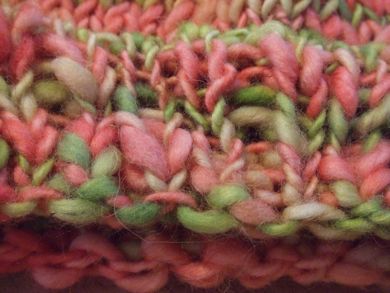 |
Estonian Lace Cast-On or German Cast-On One of the problems that I seem to always run into when I knit with really bulky yarns is that my cast on edge is to tight. My default cast on has always been Long Tail Cast-on, but I am starting to experiment with other techniques. So I decided to play around with a very old cast on known for having enough stretch for lace shawls for a hat edge. I couldn't be happier with how it turned out. I love how the bars look like they go over the knit stitches at the edge. Blog Reference: Life 'n Knitting - Estonian Cast On |
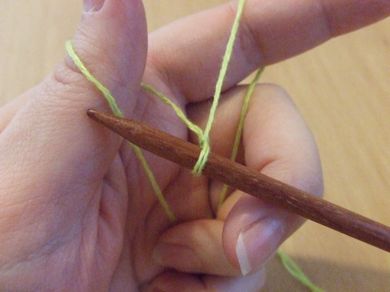 |
| This set up is much like you would use for Long Tail cast on with a slip knot at the beginning and a long tail hanging down. |
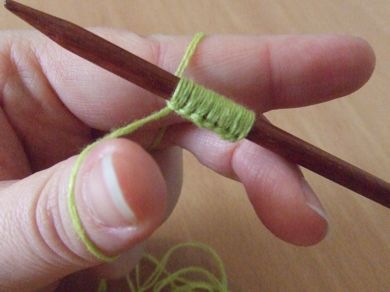 |
| The first stitch is exactly like the Long Tail Cast-on |
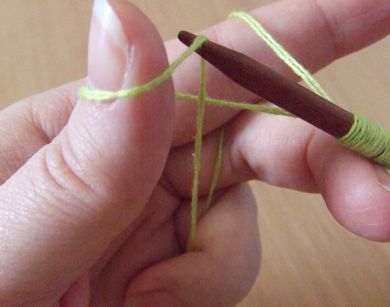 |
| where the yarn is wrapped from the inside of the thumb over and drops down to be held by your ring finger and pinkie for tension. |
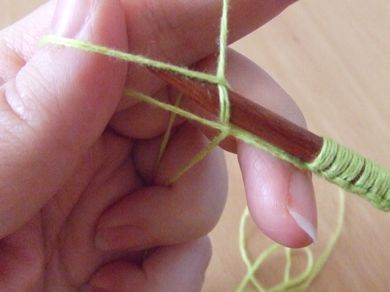 |
| The needle then picks up the outer thread around the thumb and makes a stitch with the tail yarn that is wrapped around the index finger. |
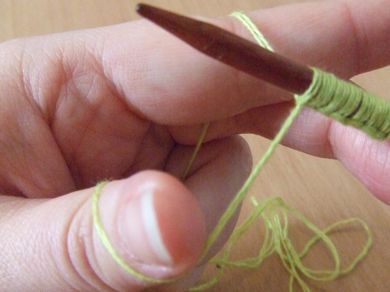 |
| Then both threads are pulled tight to start the next stitch. The Yarn is now reversed around the thumb. It is wrapped from the outer part of the thumb around and is held by the ring finger and pinkie. |
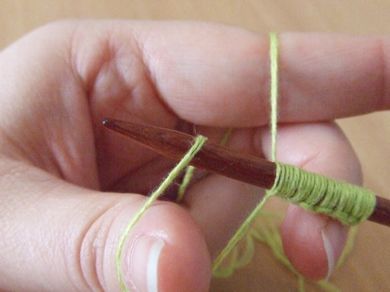 |
| The needle then picks up the inner thread around the thumb and makes a stitch with the tail yarn that is wrapped around the index finger. |
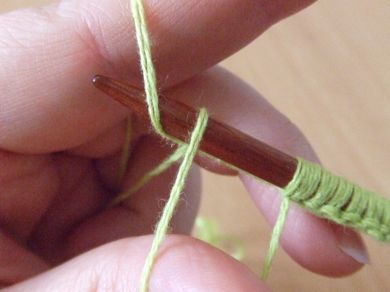 |
| For me this was the step that was the hardest since the loop tends to fall off a lot, but with practice this got a lot easier. |
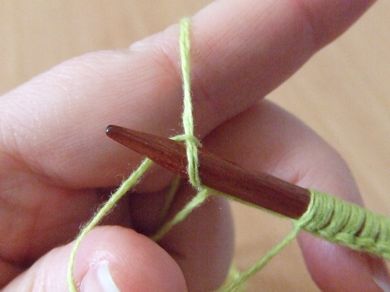 |
| The yarn is then pulled through and tightened up. |
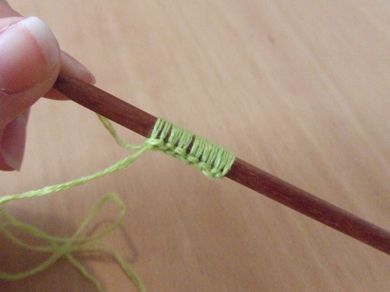 |
| You alternate between these two direction and it forms cute little bars between your stitches that are nicely locked down. |
Wednesday, February 13, 2008
kitty: Estonian Cast-on or German Cast-on
Subscribe to:
Post Comments (Atom)






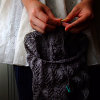
thanks for the clear instructions. I'll have to give it a try.
ReplyDeleteI am REALLY lookin forward to giving this a try on my next pair of socks. I've tried several different ways of casting on for more stretch with no success. This sounds promising.
ReplyDeleteArlene
It will even work better, if you cast on with 2 needles held together, or DON'T pull both threads tight before starting the next stitch.
ReplyDeleteI usually use 2 needles held together, but one needle is a thinner one.
Brilliant! And I appreciate Michaela's suggestion too. Will be showing this cast-on to my knitting group this week, with many thanks to you. (Ravelry KarenK)
ReplyDelete